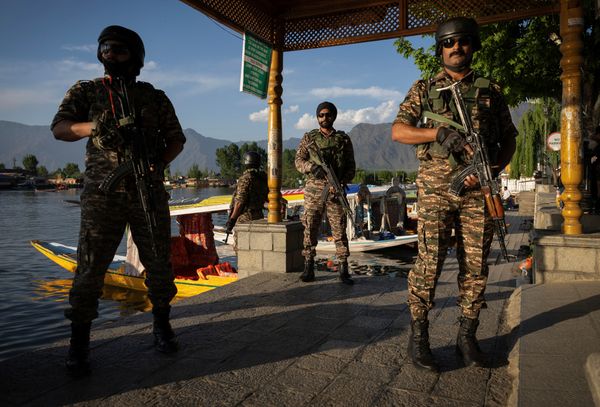NAHA -- The Okinawa prefectural government is moving to open to the public a bunker built by the Japanese Imperial Army in Naha during the Battle of Okinawa at the end of World War II.
The 32nd Army Headquarters bunker in the southern part of Okinawa Island was the site where the Japanese army decided to withdraw even further south on the island and continue fight, which led to great suffering for the Okinawan people. There have been several efforts in the past to open the important historic site to the public, but they had to be dropped due to unsafe conditions inside.
The Okinawa government has linked the project to the 50th anniversary of Okinawa's return to Japan and will begin a full-scale survey to find a safe way to open the site to the public, such as boring to determine the solidity of the ground. The survey will begin in the next fiscal year, which starts April.
The military bunker was built underground in the Shuri Castle area. There are five tunnels, totaling more than one kilometer in length. From March 1945, about 1,000 people, including commander Mitsuru Ushijima, soldiers and students, stayed there to escape U.S. military attacks. In May of the same year, the Japanese army decided to pull troops to the south to conduct an ongoing war.
The decision aimed to delay the U.S. advance to main part of Japan, but as a result, the southern part of the Okinawa Island became a tragic battlefield where evacuees and Japanese and U.S. soldiers mixed together. Many residents in Okinawa lost their lives due to the decision.
The bunker was destroyed by the Japanese army when it withdrew in late May.
During the U.S. occupation of Okinawa, the government of the Ryukyu Islands, the Naha city government and tourist organizations conducted surveys five times to confirm the location of the underground passages. After Okinawa's return to Japan in May 1972, the prefectural government examined whether it was possible to open the site to the public, but decided against it because it was not safe.
However, the loss of Shuri Castle in a 2019 fire brought renewed attention to the underground command bunker in the area. In 2021, the prefectural government formed an expert committee to resume discussions on preserving it and opening it to the public.
From next fiscal year, the Okinawa government will investigate the existence of a cavity in the first tunnel, which has not yet been excavated. It is believed that the general staff office and a war operations planning room were located in this tunnel. Boring and an investigation of the impact on the surrounding groundwater will also be carried out. In addition, the fifth tunnel, the only tunnel with a known entrance, will be shown online prior to actual public opening.
Based on the results of the survey, the expert committee plans to compile a proposal on suitable areas and methods for opening the bunker to the public by the end of March next year.
The prefectural government plans to proceed with the work with a view to opening the historic site to the public in 2026, when the destroyed main hall of Shuri Castle is scheduled to be rebuilt.
Read more from The Japan News at https://japannews.yomiuri.co.jp/







